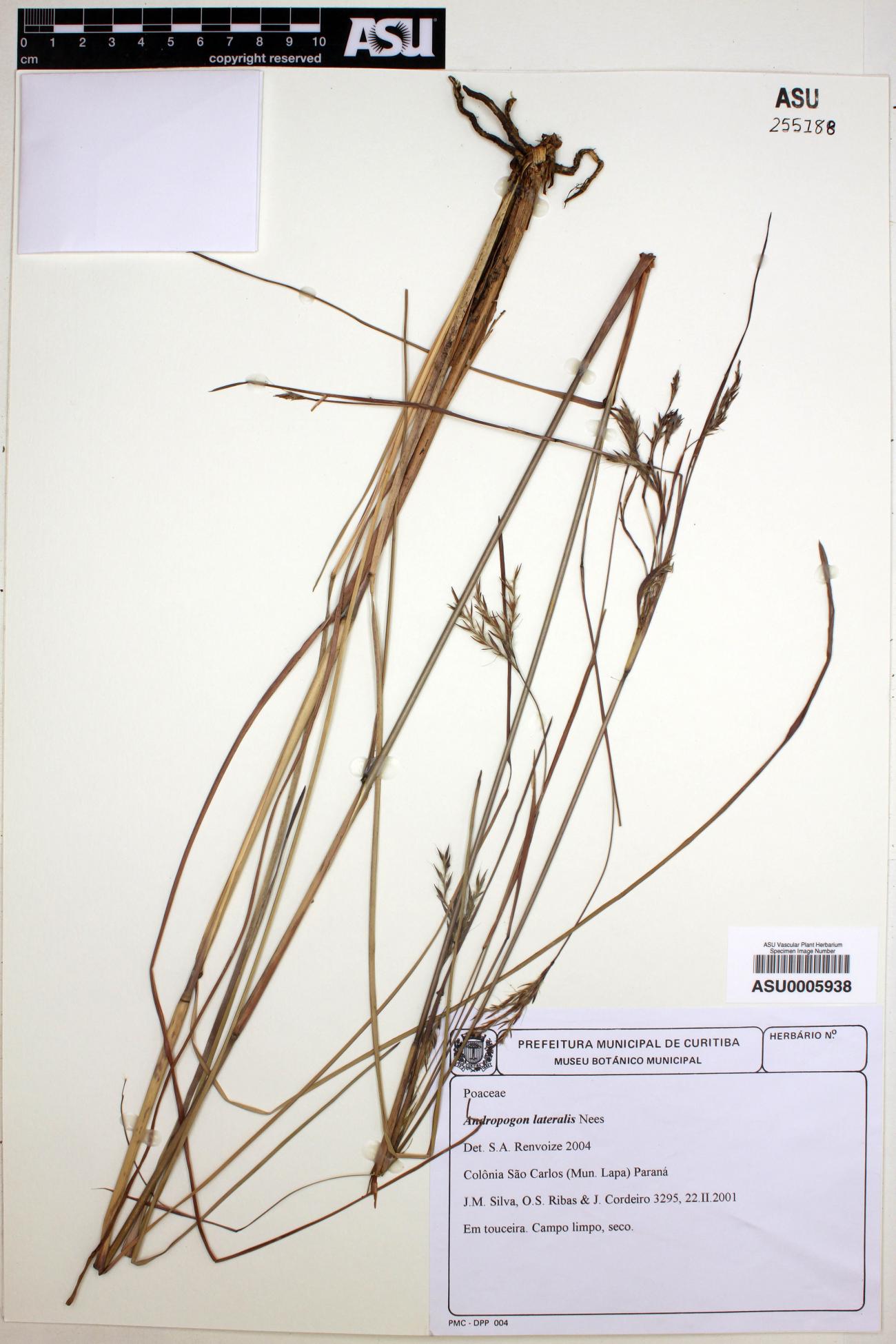
|
Family: Poaceae |
Plants perennial; usually cespitose, sometimes rhizomatous. Culms 20-310 cm, erect, much-branched distally. Leaves not aromatic; ligules membranous, sometimes ciliate; blades linear, flat, folded, or convolute. Inflorescences terminal and axillary or a false panicle; inflorescence units 1-600+ per culm; peduncles initially concealed by the subtending leaf sheaths, sometimes exserted beyond the sheaths at maturity, with (1)2-5(13) rames; rames not reflexed at maturity, axes slender, terete to flattened, not longitudinally grooved, usually conspicuously pubescent, with spikelets in heterogamous sessile-pedicellate pairs (the terminal spikelets sometimes in triplets of 1 sessile and 2 pedicellate spikelets), apices of the internodes neither cupulate nor fimbriate; disarticulation in the rames, below the sessile spikelets. Sessile spikelets bisexual, awned, with short, blunt calluses; lower glumes 2-keeled, flat or concave, usually not veined between the keels, sometimes 2-9-veined; anthers 1, 3(2). Pedicels usually longer than 3 mm, similar to the rame internodes in shape, length, and pubescence color, not fused to the rame axes. Pedicellate spikelets usually vestigial or absent, sometimes well-developed and staminate. x = 10. Name from the Greek andro, man, and pogon, beard, referring to the pubescent pedicels of the staminate spikelets. Spikelets of 2 kinds, in pairs (or trios) at joints of the rachis, one sessile and perfect, the other(s) pediceled and either staminate, neuter, abortive, or completely suppressed; glumes of the fertile spikelet equal or subequal, coriaceous, flat to concave on the back, lacking a midvein; fertile spikelet with 2 narrow, hyaline lemmas shorter than the glumes, the lower one empty and awnless, the upper one fertile and usually with an evident terminal awn; palea reduced and hyaline, or wanting; perennial, usually tufted, often glaucous, with elongate lvs; spikelets in racemes or spikes, these solitary, paired, digitate, or panicled, in our spp. mostly long-villous, the common peduncle usually subtended and often partly enclosed by a spathe-like lf. 100, widespread, mostly in warm reg. Gleason, Henry A. & Cronquist, Arthur J. 1991. Manual of vascular plants of northeastern United States and adjacent Canada. lxxv + 910 pp. ©The New York Botanical Garden. All rights reserved. Used by permission. |
This project was made possible in part by the Institute of Museum and Library Services [MG-70-19-0057-19].
Powered by Symbiota



